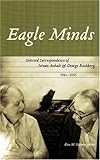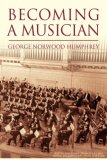 Letters to a Young Poet
Letters to a Young Poet by
Rainer Maria Rilke rating: 5 of 5 stars
50 Book Challenge #21
pages: 66 (Dover, 2002)
There are works that surface time and time again in cultural circles: film, literature, music, etc. One of these is Rainer Maria Rilke's Letters to a Young Poet. The young poet, Franz Xaver Kappus, is unremarkable in this set of letters as we never see the poems he sent to Rilke, nor do we see his end of the correspondence. Yet, what Kappus realizes, and so too the reader, is that his offerings are absolutely unnecessary because we see them through Rilke's eyes. Rilke readily assumes the mantle of humble mentor, dispensing pearls of wisdom in a language that teaches the young Kappus that not all poetry is written in stanzas.
One wonders if Rilke was indeed writing to the world. His replies to Kappus are lofty but sincere, and filled with passages that seem destined for quotation:
"Do not search now for the answers which cannot be given you because you could not live them. It is a matter of living everything. Live the questions now. Perhaps you will then gradually, without noticing it, one distant day live right into the answer."
For Rilke, bite-size gifts of mature sophistry (in the Classical sense of the word) will not suffice. In these letters to Kappus, Rilke seizes the opportunity to work out his own philosophy through provocative and probing questions. We learn that Kappus, during the course of his military service, has lost faith in God, and Rilke asks him, "Is it not much rather the case that you have never yet possessed him? ... Do you believe a child can hold him, him whom men bear only with difficulty, whose weight bows down on the aged?" Rilke is ready to be not only a literary mentor, but a theological counselor.
No subject is taboo for Rilke, who quite readily addresses sexual intimacy as he does some rather unconventional thoughts about women:
"Surely women, in whom life tarries and dwells more immediately, fruitfully and confidently, must have become fundamentally more mature human beings, more human human beings, than light man, whom the weight of no body's fruit pulls down beneath the surface of life, who, conceited and rash as he is, underrates what he thinks he loves."
Even in his criticisms of Kappus (both of his work and his character) he is ever gentle, crafting his words with the care of both poet and teacher. He is self-effacing, but sure in his prose. He tells the young Kappus: "And your doubt can become a good quality if you train it. It must become aware, it must become criticism." However, in the four year gap between the letter that contained those words and what would be his last letter to Kappus, we see that his final offering is tinged by reality and somewhat removed from the more romantic musings of his earlier letters:
"Art too is only a way of living, and one can prepare for it, living somehow, without knowing it; in everything real one is a closer, nearer neighbour to it than in the unreal semi-artistic professions which, while they make show of a relatedness to art, in practice deny and attack the existence of all art, as for instance the whole of journalism does, and almost all criticism and three quarters of what calls itself and likes to be called literature. I am glad, in a word, that you have overcome the danger of ending up there, and remain solitary and courageous somewhere in a raw reality."
As the translator comments, Kappus did indeed end up "there," publishing several "cheap popular novels." But in the end, the debt to Kappus is greater than his debt to, or at least reverence for, Rilke. The letters capture the spirit of a man, not yet old, but weathered by experience. In Kappus' military station Rilke saw much of himself, having been pressured to enter a military academy at a young age. We get a sense that Rilke is writing to a younger version of himself, encouraging the hope and youth that inspired him to write in his poem, "To Celebrate Myself":
I long to be a garden at whose fountains
my thronging dreams would pluck themselves new blooms.A reader of Rilke's letters will indeed be ready to grasp a garden full of blooms.
 The Joy of Drinking by Barbara Holland
The Joy of Drinking by Barbara Holland













